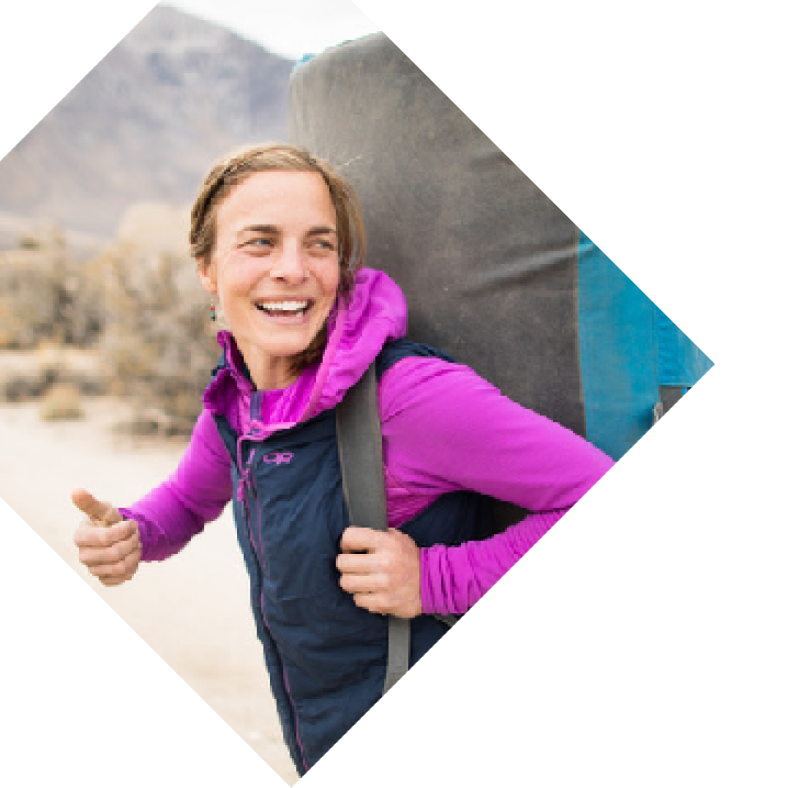The stark white view of the ferry dock shrinks in the distance, a thin layer of clouds covering the sound as the light of dawn begins its slow spread on the eastern horizon. On the car deck of the white and green striped boat, a middle-aged man in a bright red polyester jacket sits in his rusty Ford Pinto, reading a copy of The Seattle Times. Just in front of him, a ferry worker coils a thick, twined rope at the bow, braving the cool summer morning breeze. And behind, in their moss green Datsun wagon, a couple dozes in the front seat, handmade backpacks set neatly in the trunk beside ice axes and leather boots.
The year is 1979. Sue is a middle school teacher in Tacoma; Marty works at an industrial supply company in downtown Seattle. The duo met on a trail in Olympic National Park; they are newly married and living in a ramshackle farmhouse on Vashon Island, a short ferry ride from the city. The two had independently discovered alpine climbing a few years previous and now it is summertime, school is out for the season, and they are young, eager, and headed to the mountains.

Picture, if you can, climbing before climbing was “a thing.” This is before the age of fast-and-light, before gear guides and avalanche forecasting, before climbing-centric hashtags and online trip reports. This is an era when lightweight merino and polypro were still canvas jackets and army surplus wool knickers, when REI only operated a handful of retail stores. This is when climbing gear was still made by Chouinard Equipment, when nuts, hexes, and pitons were the protection of choice. And this was a time when GORE-TEX products truly began to empower outdoor enthusiasts.

Sue and Marty bought most of their gear from two local companies, Early Winters and Crag Customwork, both early adopters of the revolutionary waterproof, windproof, breathable benefits from the GORE-TEX brand. On this particular day, the couple's backpacks contain an Early Winters Winterlight tent and Crag Customwork rain pants, jackets, and gaiters, all made with this fabled, innovative fabric. Sue and Marty were beginning to push their previous limits as their packs grew lighter and the gear more comfortable and functional; the GORE-TEX brand truly ushered in a new era of possibility in climbing.

As the boat docks, the pair awakens for the second time that morning, weaving along the waterfront streets of West Seattle to reach the northbound freeway, pointing the Datsun's nose in the direction of the North Cascades. Their journey includes a quick stop at a roadside market, buying beef jerky and cheese to supplement their simple diet of oatmeal, freeze-dried dinners, and PB&J. Before noon, they are bumping up the Suiattle River Road, meeting three friends at the trailhead. They park the car and continue toward Cascade Pass just outside of Marblemount.
The adventurous five had only heard whimsical stories of the Ptarmigan Traverse, having known, via the technology-free grapevine, of a few fellow alpinists who had completed the 35-mile, cross-country traverse through the high-alpine heart of the North Cascades. In the months previous, Sue and Marty had poured over a collection of topographic maps pieced together on their wall, penciling in their route, debating which of the peaks they would climb along the way. Sue had spent days deliberating over how much food to pack; Marty had recently seam-sealed their new tent with GORE-TEX laminate and was secretly hoping for some weather to test its prowess.

In the 1970s, climbing entered a massive period of growth, but the sport had arguably not yet gained the following and trendiness that it now holds. Fred Beckey’s Cascade Alpine Guides were, though seminal collections, unflashy, lacking detail, and with small, black and white photos. Plus, whenever a guidebook reads, “follow the obvious gully,” you know you’re bound to get lost. Gear was in the midst of a huge transformation, but still quite bulky, less advanced and definitely, definitely not sexy. Toss in the lack of personal computers to share current weather and snow conditions, post photos, and connect with people in the community, and the unknown was still very alive and well. As was the unbridled drive behind the efforts of climbers.
I like to think that they climbed with a level of passion and purity of which we know little. They climbed despite the discomfort, despite the suspicions of their friends and family, despite the still niche nature of outdoor gear. They climbed for the beauty, for the adventure, and for the wilderness. They climbed for the love of it—as I hope we can still do today—in the midst of pushing the grade, speed ascents and smash-and-grab missions, Instagram likes and the “it-didn’t-happen-unless-you-have-a-photo” culture.

As they sort their gear at the trailhead, Marty stuffs his GORE-TEX jacket at the top of his pack and places his map and compass in the zippered lid. He knows he needs to keep these tools handy as the group embarks into unseen terrain, onto glaciers, and through narrow cols. The eager crew heads off through the trees and into the alpine, their backs to the car and their eyes set on the journey ahead: a trip that would take seven days, carve blisters into their feet and weave dreams through their young minds. For that matter, they were all headed into years of adventure in the wilderness and in life: experiences that would change with the passing time, experiences that would surely change them as well.
Little did Marty and Sue know, but decades later they would be back to the Ptarmigan, this time guiding two young daughters across the traverse—one of which, was me.



